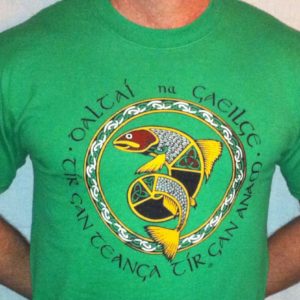A friend’s eye is a good mirror.
Note: There is another seanfhocal that expresses a similar sentiment. “Ní cara gach bladaire.” (Every flatterer is not a friend.) It is expected that one will often flatter a friend. Yet another seanfhocal tells us that: “Gineann bladar cradas”. (Flattery begets friendship.) But a true friend will reflect our errors, our misjudgments, our shortcomings, … when necessary.
Warning: If grammar makes your head hurt, just enjoy this seanfhocal as it is, and DO NOT read any further!
The word order in this seanfhocal is not the usual verb–subject–predicate, but verb–predicate–subject. This is because the copula, i.e., the verb ‘is’, is used with an indefinite predicate.
For example, in this case the predicate, ‘a good mirror’, is not specific. It does not tell the reader exactly which mirror is being discussed. Like many proverbs, this one is a metaphor, so it can be any good mirror. Since the predicate is indefinite, and the verb is the copula, then the “classification” rule for the copula requires that the predicate precedes the subject.
All forms of the copula with indefinite predicates put the predicate before the subject. We see this is in the negative form of this seanfhocal, “Ní cara gach bladaire.” (Every flatterer is not a friend.)
On the other hand, when the copula is used with a definite predicate then the usual Irish word order applies.
